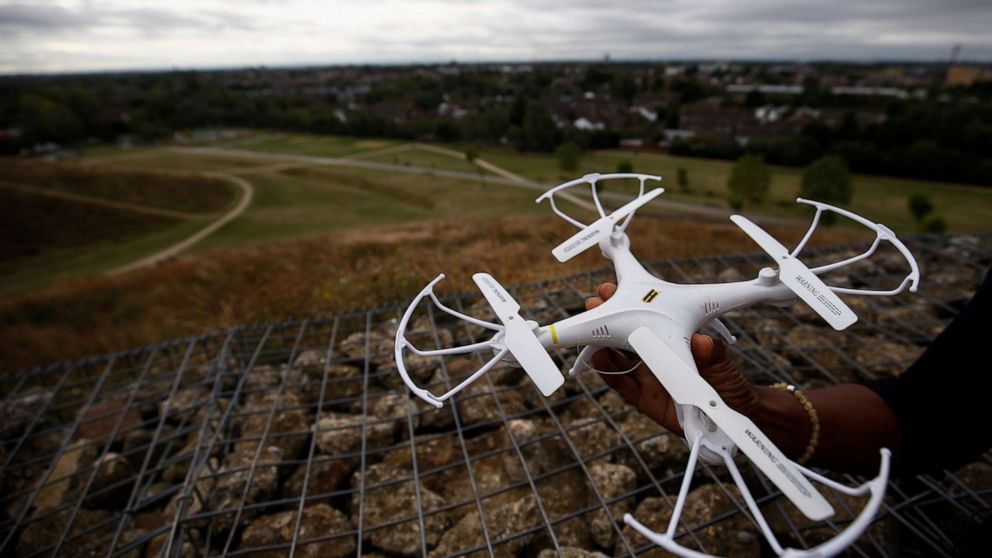UK climate-change activists arrested over plan to fly drones around Heathrow Airport
LONDON -- Police in the UK have arrested twelve environmental activists over plans to fly drones around the UK’s busiest airport to bring attention to climate change.
The plans had no impact on flight schedules on Friday.
“Heathrow’s runways and taxiways remain open and fully operational despite attempts to disrupt the airport through the illegal use of drones in protest nearby," Heathrow Airport said in a statement.
The activists’ group, called Heathrow Pause, had planned to fly toy drones in the so-called exclusion zone around Heathrow Airport to protest the planned expansion of London's Heathrow Airport and to draw attention to the environmental cost of air travel.
Arrests began on Thursday -- the day before the planned protests -- when police arrested seven people. An additional five people were arrested on Friday – four on public land outside the perimeter of Heathrow Airport, and one in the airport itself.
"Our policing plan is aimed at preventing criminal activity which poses a significant safety and security risk to the airport, and the thousands of passengers that will be using it,” said Deputy Assistant Commissioner Laurence Taylor in a statement. "In these circumstances, we believe these arrests to be a proportionate response to preventing criminal activity that could significantly impact on a major piece of national infrastructure.”
All arrests were made “on suspicion of conspiracy to commit a public nuisance,” according to the police statement.
Among those arrested were former Paralympian James Brown and Roger Hallam, a co-founder of the group Extinction Rebellion, a radical protest group that employs non-violent acts of civil disobedience to highlight the urgency of the climate crisis.
The activists made their plans public weeks ago informing the public, the police, and Heathrow of the details of their activities on their website and in meetings.
They said that they would “adhere scrupulously to our total commitment to non-violence and passenger safety” by using lightweight drones, flying them only 6ft above the ground, and flying them far from Heathrow’s flightpaths. They said that they would “pose no risk to aircraft.” They hoped, however, to prompt Heathrow to ground planes according to their by-laws around drones in the exclusion zone.
Police say that protesters who fly drones within the exclusion zone could face a life sentence in jail. But were also confident that the protesters wouldn’t disrupt flights, telling passengers that they should come to the airport for scheduled flights as per usual.
Despite the early arrests, the remaining activists began attempting to fly the drones at 3 am on Friday morning, but couldn’t get the drones to fly. They claimed that Heathrow had jammed the signal to prevent them from operating.
Unlike other protest movements, an arrest is a part of the Extinction Rebellion protest strategy and activists often aim to get themselves arrested, or at least know that it is a distinct possibility.
They call it “an opportunity to tell the truth - to the courts, the media and the public, and to raise the alarm on the climate emergency we face.”
Heathrow Airport released its own statement saying, “We agree with the need for climate change action but illegal protest activity designated with the intention of disrupting thousands of people, is not the answer.”
Heathrow is the seventh busiest airport in the world and the UK’s busiest airport with over 80 million passengers passing through in 2018.
In 2016, there were 3.8 billion air travelers. That number is expected to almost double to 7.2 billion passengers in 2015 according to the International Air Transport Association. The aviation industry is responsible for 2% of all CO2 emissions, and 12% of transport-sector CO2 emissions, according to industry non-profit The Air Transport Action Group.




